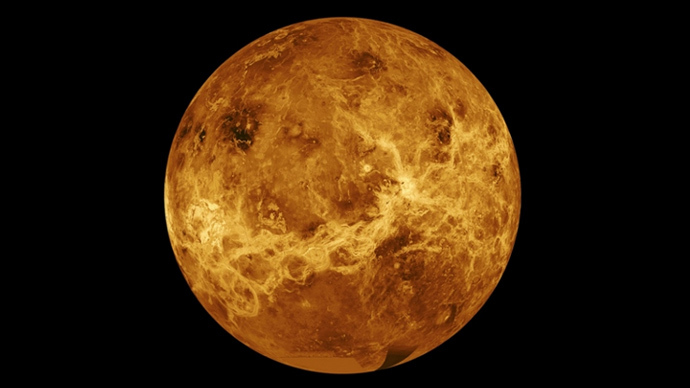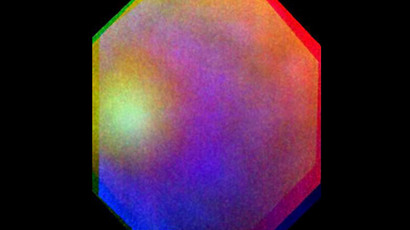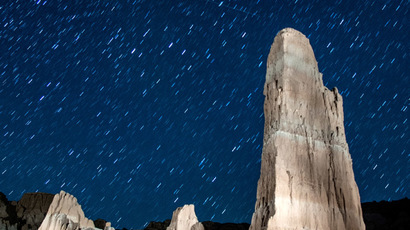Venus once shrouded in oceans of liquid-like CO2 gas, study suggests

The second planet from the Sun may once have been home to vast oceans of carbon dioxide that flew as liquid in “soap bubbles,” American researchers suggest. The oceans could have helped to create the Earth-like geological surface features of Venus.
“Presently, the atmosphere of Venus is mostly carbon dioxide,
96.5 percent by volume,” lead study author Dima Bolmatov, a
theoretical physicist at Cornell University in Ithaca, New York,
told Space.com.
Previous research has suggested that despite Venus’ current
status as an immensely hot and dry planet, it may have once been
home to enough water that an ocean of water 25 meters deep
covered the planet.
However, Bolmatov’s research instead suggests that Venus may have
once had oceans of supercritical carbon dioxide, that is carbon
dioxide in a fluid state, held above its critical temperature and
pressure.
READ MORE: Cloud castles: NASA wants to deploy
manned solar-powered airships to Venus
“This in turn makes it plausible that geological features on
Venus like rift valleys, riverlike beds, and plains are the
fingerprints of near-surface activity of liquid-like
supercritical carbon dioxide,” Bolmatov said.

Venus has often been compared to Earth as a “sister
planet” on account of its size, distance from the sun,
gravity, and general mass all being similar to those here.
However, scientists believe that the surface pressure of Venus
could have been far higher in the past, therefore allowing carbon
dioxide to exist in this altered state. This period of heightened
surface pressure could have lasted from between 100 million and
200 million years.
READ MORE: ‘Rainbow’ on Venus captured by ESA
Bolmatov says that his team will be undertaking further research
to understand any shift from gas-like to liquid-like properties
in supercritical carbon dioxide.
The gas in this different state “looked like soap bubbles…a
bubble of gas that is covered by a thick layer of liquid,”
Bolmatov said.
However, many things still remain uncertain about the behavior of
supercritical carbon dioxide – the study has shown that
supercritical matter can shift dramatically from gas-like to
liquid-like properties – whereas previous research suggested the
change in behaviors was gradual.














